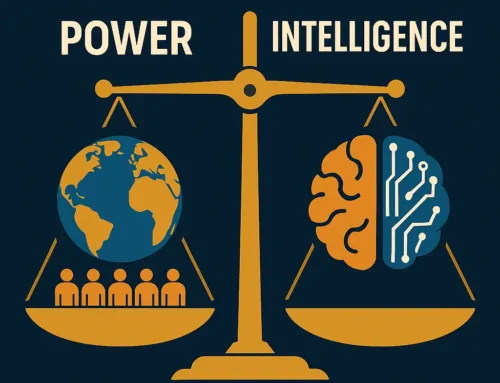
Approx. read time: 16.3 min.
Post: How the CIA and Mossad Used a Computer Virus to Dismantle Iran’s Nuclear Program
Stuxnet’s Origins and Development
Stuxnet, a highly sophisticated computer virus, represents one of the most significant turning points in cyber warfare. It was designed and deployed by the intelligence agencies of the United States and Israel—specifically, the CIA and Mossad—to sabotage Iran’s nuclear enrichment program. As a result of this covert cyberattack, Iran’s progress toward developing nuclear weapons was delayed, causing a major setback in its ambitions. Stuxnet wasn’t just a virus; it was a new breed of digital weapon, engineered to disrupt physical infrastructure and cause real-world damage. The project, known as Operation Olympic Games, began under the Bush administration and extended into President Obama’s term.
The virus was created to target Iran’s nuclear facility in Natanz, where the country was enriching uranium in centrifuges as part of its nuclear energy program, which Western nations feared was a front for developing nuclear weapons. Stuxnet was developed as a collaboration between the National Security Agency (NSA) of the United States, the Israeli Mossad, and other Western intelligence agencies(9News)(Smithsonian Magazine).
Technical Aspects of Stuxnet: How It Worked
Stuxnet stands out for its complexity and its precision. Unlike ordinary malware that disrupts systems indiscriminately, Stuxnet was specifically designed to infiltrate industrial control systems, particularly those used in Iran’s nuclear facilities. The primary target of the virus was the Siemens Step7 software that controlled the Programmable Logic Controllers (PLCs) in charge of regulating the centrifuges at Natanz(Wikipedia).
Centrifuges are vital components of the uranium enrichment process, spinning at high speeds to separate isotopes. The Stuxnet worm manipulated these PLCs, causing the centrifuges to spin at varying, incorrect speeds, which led to mechanical failure. The brilliance of Stuxnet lay in how it was able to make the system appear to be functioning normally while it caused physical destruction. Engineers monitoring the centrifuges were unaware that anything was amiss as the centrifuges spun out of control, eventually breaking down(Smithsonian Magazine).
Stuxnet was introduced into Natanz through a USB drive. Since the facility was air-gapped, meaning it wasn’t connected to the internet, direct access to the network was required to install the malware. It is believed that an Iranian engineer, possibly an insider recruited by the CIA or Mossad, was responsible for bringing the infected USB drive into the facility(Sandboxx).
The malware itself was incredibly sophisticated, exploiting multiple zero-day vulnerabilities—previously unknown security flaws in software—that allowed it to bypass defenses and gain control of systems. Additionally, Stuxnet used stolen digital certificates from reputable companies, which made it appear legitimate to the system(Wikipedia)(Smithsonian Magazine).
The Multiple Versions of Stuxnet
There were multiple versions of Stuxnet deployed over time, each more aggressive than the last. The first version, deployed in 2007, was relatively restrained, causing temporary disruptions but not permanently damaging Iran’s nuclear infrastructure. However, as Iranian technicians began repairing damaged centrifuges and resumed uranium enrichment, a second, more aggressive version was released in 2009. This version caused permanent damage, forcing Iran to replace many of its centrifuges and halting its enrichment activities for months(Sandboxx)(Smithsonian Magazine).
The second version of Stuxnet introduced a new level of destructiveness, focusing on making the centrifuges spin at incorrect speeds, leading them to self-destruct. What made Stuxnet so effective was that it only targeted specific systems—those related to uranium enrichment—while leaving other systems untouched. This precision is what made Stuxnet a revolutionary cyberweapon(Wikipedia)(Smithsonian Magazine).
The Global Spread and Unintended Consequences
Although Stuxnet was designed to specifically target Iran’s Natanz facility, it did not remain confined to this location. Due to a programming error, the virus spread beyond Iran, infecting computers across the globe. However, because it was coded to target only specific Siemens systems, it did not cause widespread damage elsewhere. The virus was first discovered in 2010 by Belarusian security firm VirusBlokAda when it infected a computer in Iran(Wikipedia).
Once cybersecurity companies like Symantec and Kaspersky began analyzing the malware, they were astounded by its complexity and the specific nature of its target. Their reports revealed that over 60% of the infected systems were located in Iran, indicating the virus’s intended target(Wikipedia).
Stuxnet’s discovery sent shockwaves through the cybersecurity community, raising concerns about the use of cyber weapons. The virus had inadvertently spread across the world, including to countries like India, Indonesia, and even the United States, though it caused no damage outside of the specific systems it was designed to attack(Smithsonian Magazine).
Impact on Iran’s Nuclear Program
The immediate impact of Stuxnet on Iran’s nuclear program was significant. The virus is estimated to have destroyed around 1,000 of the 5,000 centrifuges in operation at Natanz. This forced Iran to temporarily halt its enrichment activities and replace the damaged equipment, delaying its progress by months or even years(Smithsonian Magazine).
In the aftermath of the attack, Iran took steps to enhance its cybersecurity defenses. The Iranian government also reportedly retaliated by developing its own cyber capabilities. In 2012, Iranian hackers launched a cyberattack on Saudi Aramco, one of the largest oil companies in the world, erasing data from 30,000 computers(9News).
Global Cybersecurity Changes
The Stuxnet attack did more than just set back Iran’s nuclear program—it reshaped global approaches to cybersecurity. In the years following the discovery of the virus, countries around the world began to recognize the growing threat of cyber warfare. Many nations, including the United States, Russia, China, and India, developed and implemented new cybersecurity policies and protocols to defend against potential cyberattacks on critical infrastructure(9News).
India, for instance, adopted its National Cyber Security Policy in 2013 to better protect its digital infrastructure, and later established the National Critical Information Infrastructure Protection Centre to safeguard critical assets like power plants and industrial facilities(9News).
Legal and Ethical Implications of Cyber Warfare
Stuxnet also opened up a legal and ethical debate about the nature of cyber warfare. Traditional acts of war, such as airstrikes or ground invasions, are well-defined under international law, but cyberattacks operate in a more ambiguous space. Was Stuxnet an act of war, or a covert action? Under U.S. law, covert actions require presidential authorization, and many view Stuxnet as a covert operation carried out under such authorization(Smithsonian Magazine).
Internationally, however, the attack raises questions about the rules governing cyber warfare. The Tallinn Manual, an academic work on the legal framework for cyber warfare, suggests that cyberattacks resulting in physical destruction could be considered acts of war, depending on the scale and intent of the attack. While Stuxnet’s designers attempted to minimize collateral damage, the virus’s unintended spread demonstrated the risks of using digital weapons(Smithsonian Magazine).
The Legacy of Stuxnet
Stuxnet is a landmark event in both cyber and military history. It demonstrated that a well-designed cyberattack could cause real-world damage, creating a blueprint for future cyber operations. While the virus successfully delayed Iran’s nuclear program, it also set off a global arms race in cyber capabilities, with nations investing heavily in both offensive and defensive cyber tools.
As cyber warfare becomes an increasingly important aspect of international conflict, the lessons of Stuxnet will continue to shape the strategies and policies of nations around the world. The virus’s legacy reminds us that the digital realm is now a battlefield, where lines between war and peace, covert action, and full-scale conflict are increasingly blurred.
Technical Aspects of Stuxnet
Stuxnet was a highly sophisticated and targeted piece of malware, marking the beginning of a new era in cyber warfare. Its primary objective was to infiltrate Iran’s nuclear enrichment facility at Natanz and sabotage the uranium enrichment process. Here are the key technical aspects of how it worked:
1. Propagation Mechanisms
Stuxnet utilized multiple techniques to propagate itself. Since the target facility was air-gapped (not connected to the internet), it was initially introduced via infected USB drives. Once inside the system, Stuxnet spread through local networks using multiple methods. These included:
- Zero-day vulnerabilities: Stuxnet exploited at least four zero-day vulnerabilities, which are security flaws unknown to the software vendor, allowing it to bypass defenses and gain elevated privileges on infected systems(Sandboxx)(Wikipedia).
- Network shares: Stuxnet could propagate via shared network folders, moving laterally across systems(Wikipedia).
- Peer-to-peer communication: The malware also used a peer-to-peer communication model to ensure its code could be updated across infected machines without needing external internet access.
2. Targeted at Siemens Industrial Control Systems
Stuxnet was specifically crafted to target Siemens Step7 software, which was used to control Programmable Logic Controllers (PLCs) that managed the uranium-enriching centrifuges at Natanz. These PLCs were responsible for regulating the speed of the centrifuges—high-speed machines that separate uranium isotopes(Sandboxx).
Once Stuxnet infiltrated the system, it modified the operations of the PLCs in two ways:
- Altered centrifuge speeds: The malware intermittently changed the speed of the centrifuges, causing them to spin too fast or too slow. This put undue stress on the machines, leading to their physical degradation and eventual destruction(Smithsonian Magazine).
- Stealth operation: Stuxnet simultaneously sent normal operational data back to monitoring systems, making it appear that everything was functioning correctly while the centrifuges were being damaged(Wikipedia)(Smithsonian Magazine).
3. Advanced Stealth Techniques
Stuxnet employed several advanced techniques to remain undetected for long periods:
- Rootkit: The malware installed a rootkit on the infected machines, allowing it to hide from security scans and system monitoring tools(Sandboxx).
- Stolen digital certificates: To further evade detection, Stuxnet used stolen digital certificates from trusted companies like Realtek and JMicron. These certificates allowed the malware to appear as legitimate software to the operating system and bypass standard security checks(Wikipedia).
4. Exploiting Zero-Day Vulnerabilities
One of the defining features of Stuxnet was its use of zero-day vulnerabilities. Zero-day vulnerabilities are security holes in software that are not known to the vendor and thus have not been patched. Stuxnet exploited four such vulnerabilities in Microsoft Windows, which allowed it to escalate privileges and gain control over critical systems(Sandboxx)(Wikipedia).
- Privilege escalation: By exploiting these vulnerabilities, Stuxnet could move from user-level privileges to system-level control, giving it full access to critical systems inside the nuclear facility(Wikipedia).
5. Command and Control Capabilities
Stuxnet incorporated a command-and-control (C2) structure that allowed its operators to receive data from infected machines and issue updates to the malware:
- Encrypted communication: The malware communicated with remote servers using encrypted channels, which allowed it to send progress reports back to its operators without being detected.
- Self-updating: Stuxnet could download new versions of itself when necessary. This self-updating capability ensured that the virus could adapt if its operators needed to modify the attack parameters(Sandboxx).
6. Specificity of the Attack
Stuxnet was designed to attack a very narrow set of systems. Before executing its payload, the malware would first confirm that it was in the right environment by checking if the system:
- Was running Siemens Step7 software.
- Controlled a specific set of PLCs tied to uranium enrichment centrifuges(Wikipedia).
If these conditions were not met, Stuxnet would remain dormant, ensuring that it did not cause damage outside of its intended target(Sandboxx)(Smithsonian Magazine).
7. Payload Execution
Once Stuxnet confirmed that it was in the right environment, it executed its payload by subtly altering the operational parameters of the centrifuges. The centrifuges were forced to:
- Spin at excessively high or low speeds.
- Operate at irregular intervals, causing cumulative wear and tear on the machines.
These disruptions led to the physical destruction of approximately 1,000 centrifuges at the Natanz facility, significantly delaying Iran’s nuclear enrichment activities(Smithsonian Magazine).
8. Unintended Spread and Discovery
Although Stuxnet was designed to be a precision weapon, it spread beyond its intended target. Due to a programming error, the virus spread to systems outside Iran, including in countries like India and Indonesia. This accidental spread eventually led to its discovery by cybersecurity researchers(Wikipedia).
The worm’s spread outside of Iran did not cause physical damage elsewhere, as it was designed to target only specific Siemens systems, but its discovery by security firms like Symantec and Kaspersky raised alarms worldwide about the potential for similar attacks on industrial infrastructure(Wikipedia)(Smithsonian Magazine).
The Stuxnet virus represents a watershed moment in the history of cyber warfare. Its advanced propagation techniques, sophisticated targeting of industrial control systems, and the use of zero-day vulnerabilities set it apart as one of the most complex and effective cyber weapons ever deployed. By successfully sabotaging Iran’s nuclear ambitions, Stuxnet demonstrated the power of digital weapons to cause real-world damage, while also raising significant questions about the future of cybersecurity in critical infrastructure settings.
Here is a high-level pseudocode that describes how the Stuxnet virus functioned:
Detailed Explanation of Key Parts:
- Propagation Mechanisms:
- USB Drive Infection: Stuxnet was originally introduced to air-gapped systems via infected USB drives. It leveraged the Windows LNK vulnerability (CVE-2010-2568) to automatically execute when the drive was accessed(Sandboxx).
- Zero-Day Exploits: Stuxnet used four zero-day vulnerabilities:
- CVE-2010-2568: Exploited Windows’ handling of LNK files to execute automatically from a USB.
- CVE-2010-2729: A vulnerability in Windows Printer Spooler service allowed the malware to spread via network shares(Wikipedia).
- CVE-2010-2743: This was a Windows Kernel vulnerability that allowed Stuxnet to elevate privileges and take full control of the system.
- CVE-2010-3888: A flaw in Windows Task Scheduler allowed the malware to execute tasks with elevated permissions(Wikipedia).
- Stealth Techniques:
- Rootkit Installation: Stuxnet installed a rootkit to avoid detection from antivirus systems and hide its activity on the infected machines. This ensured that the sabotage would remain undetected for long periods.
- Stolen Certificates: The use of stolen digital certificates from trusted vendors (Realtek and JMicron) allowed Stuxnet to bypass security checks by masquerading as legitimate software(Sandboxx)(Wikipedia).
- Target Verification:
- Stuxnet only executed its payload if it was sure it had infected the correct target. It verified that the system was running Siemens Step7 software controlling uranium enrichment centrifuges. This prevented the malware from damaging unintended systems(Sandboxx)(Smithsonian Magazine).
- Payload Execution:
- Once confirmed, Stuxnet manipulated the centrifuges by altering their speed, causing them to either spin too fast or too slow, which eventually led to their failure. It sent false operational data back to the monitoring systems to hide this sabotage from operators(Smithsonian Magazine).
- Command and Control (C2):
- Stuxnet could communicate with external servers using encrypted channels to send progress reports and receive updates. This allowed its operators to maintain control over the malware even after it had been deployed in the field(Sandboxx).
This pseudocode and explanation capture the technical complexity of Stuxnet and how it combined zero-day vulnerabilities, stealth, and targeted sabotage to cause physical damage to Iran’s nuclear program.









